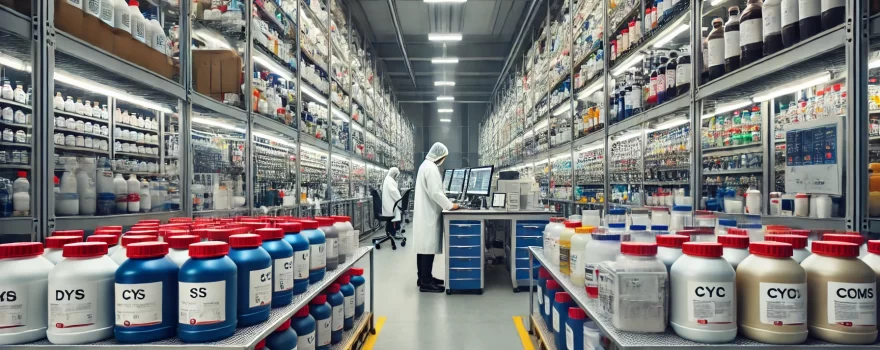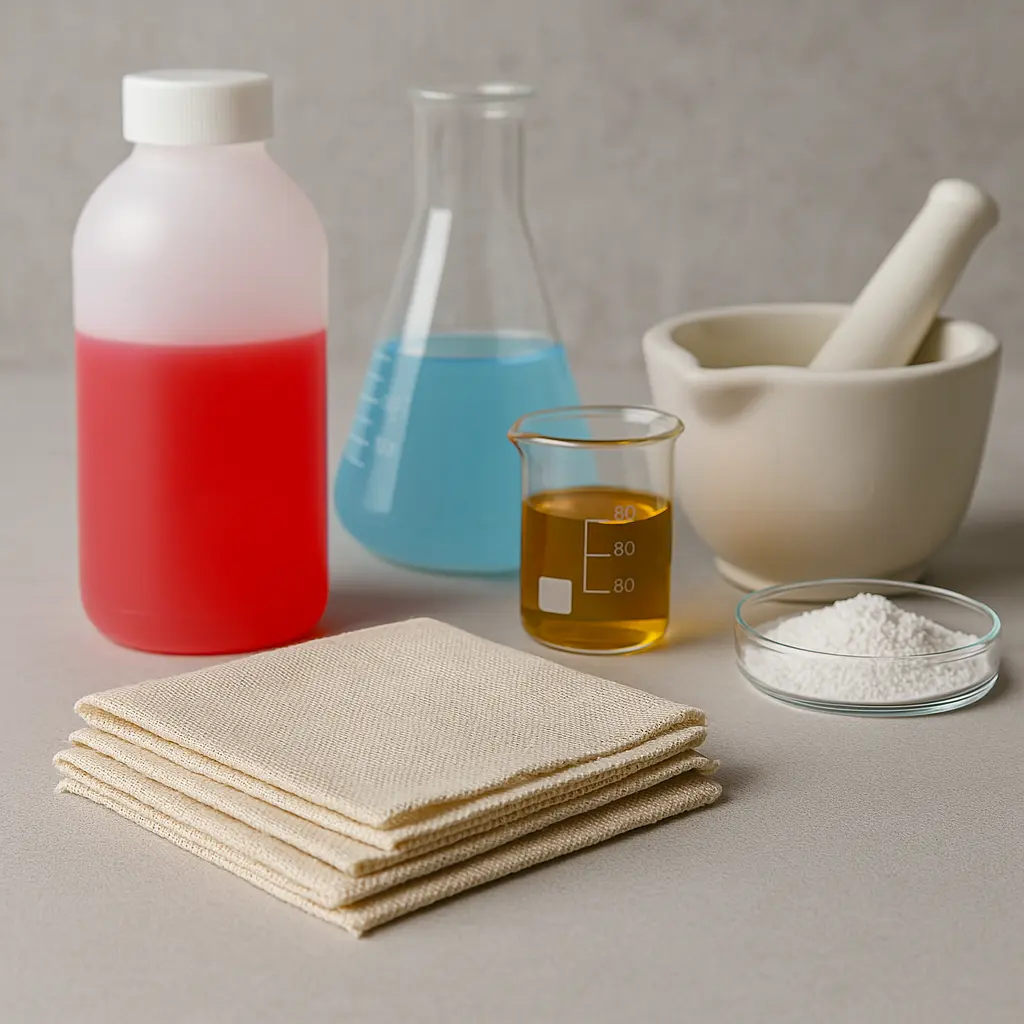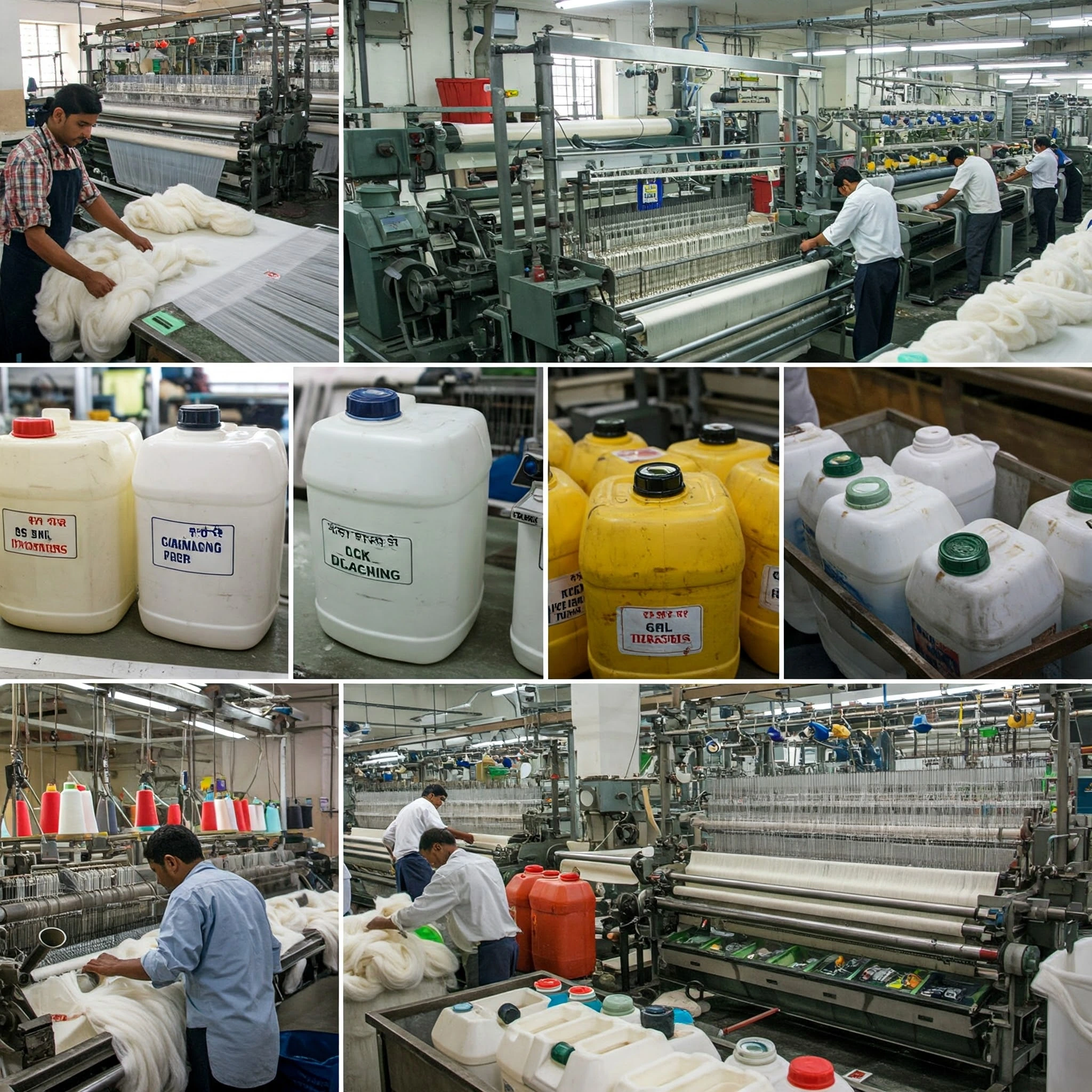
Table of Contents
Formulation Guidelines for Textile Chemicals
Formulation Guidelines for Textile Chemicals are essential. We create specific mixes. These mixes give fabrics their properties. Think color. Think feel. Think function. It’s more than just mixing. It’s about precision. We target results. Colorfastness? Wrinkle resistance? It’s all in the formula. We adapt to new fibers. We adapt to new demands. Like baking, it’s a recipe. Right ingredients. Right steps. Consistency matters.
Key Components in Textile Chemical Formulations
Good formulations, following formulation guidelines for textile chemicals, have key parts. Active ingredients are the workhorses. They do the job. Dyes, repellents. Solvents dissolve actives. They make them usable. Additives fine-tune. Like seasoning. Control pH, foam. Stabilizers prevent breakdown. Extend shelf life. Each part is vital in textile chemical formulation. They work together. Like a machine. One missing part, it fails.
- Active Ingredients:
- Dyes: Color the fabric.
- Softening agents: Improve fabric feel.
- Water repellents: Make fabric water-resistant.
- Flame retardants: Reduce flammability.
- Solvents:
- Water: Common and versatile.
- Organic solvents: For specific applications.
- Additives:
- pH adjusters: Control acidity/alkalinity.
- Foam control agents: Prevent excessive foaming.
- Wetting agents: Improve liquid penetration.
- Stabilizers:
- Antioxidants: Prevent degradation.
- Preservatives: Prevent microbial growth.
Classification of Textile Chemicals and Their Functions
Formulation guidelines for textile chemicals help us understand that textile chemicals have many roles. Group them by function. Pretreatment first. Prep work for dyeing. Dyeing chemicals add color. Dyes and auxiliaries. Printing chemicals for patterns. Thickeners and binders. Finishing chemicals enhance properties. Softeners to flame retardants. Each group has a purpose. Each is vital in textile chemical formulations.
- Pretreatment Chemicals:
- Desizing agents: Remove starch.
- Scouring agents: Remove impurities.
- Bleaching agents: Whiten the fabric.
- Dyeing Chemicals:
- Dyes: Color the fabric.
- Auxiliaries: Improve dye uptake.
- Fixing agents: Enhance colorfastness.
- Printing Chemicals:
- Thickeners: Control print paste viscosity.
- Binders: Adhere pigments to fabric.
- Pigments: Provide color.
- Finishing Chemicals:
- Softeners: Improve fabric feel.
- Water repellents: Make fabric water-resistant.
- Flame retardants: Reduce flammability.
- Wrinkle resistant chemicals: reduce wrinkling.

Raw Material Selection: Quality & Performance Considerations
Raw materials matter. It’s not casual. Quality and performance are key. Consistent results are the goal.
Purity first. Impurities ruin products. Change color. Reduce effect. Supplier matters. Are they reliable? Consistent quality?
Performance counts. Does it meet your needs? Does it work? Cost is a factor. Don’t sacrifice quality. Cheap is wasteful.
Environmental impact too. Sustainable and safe materials. Find the right balance. Perform well. Safe for the planet.
- Purity:
- High purity ensures consistent results.
- Impurities can affect color and performance.
- Supplier Reliability:
- Consistent quality from a trusted source.
- Reliable supply chain.
- Performance:
- Materials must meet specific performance requirements.
- Evaluate effectiveness in desired applications.
- Cost-Effectiveness:
- Balance cost with quality.
- Avoid sacrificing quality for lower prices.
- Environmental Impact:
- Choose sustainable and safe materials.
- Consider the environmental footprint.
Formulation Techniques for Different Textile Applications
Applications vary. Techniques vary too. One size doesn’t fit all. Dyeing? Batch process. Large tanks. Temperature and pH control.
Printing? Viscosity counts. Thickeners control flow. Finishing? Padding or spraying. Chemical baths. Fine mist.
Each method has its uses. Chosen by outcome. Control and precision matter. Like cooking. Different dishes, different methods.
- Dyeing:
- Batch process: Large tanks, precise control.
- Continuous process: For large-scale production.
- Exhaust dyeing: Dye absorbed from a bath.
- Printing:
- Screen printing: Paste forced through a mesh.
- Inkjet printing: Precise application of ink.
- Roller printing: Patterns transferred from engraved rollers.
- Finishing:
- Padding: Fabric passed through a chemical bath.
- Spraying: Fine mist application.
- Coating: Applying a layer to the fabric surface.
Optimization of Chemical Formulations for Efficiency
We want results. We want efficiency. Optimization is key. Find the sweet spot. Use less, achieve more.
Concentration matters. Can you reduce it? Without losing performance? Process parameters too. Lower temperature? Shorter time?
Reduce waste. Recycle? Reuse? Be smart. Be resourceful. Be responsible. Don’t waste. Maximize effect. Minimize impact.
- Concentration Optimization:
- Reduce active ingredient concentration.
- Maintain performance with minimal chemicals.
- Process Parameter Adjustment:
- Lower temperature or treatment time.
- Save energy and reduce processing costs.
- Waste Reduction and Recycling:
- Recycle or reuse chemicals.
- Minimize environmental impact.
- Synergistic Effects:
- Combine ingredients for enhanced performance.
- Achieve better results with fewer chemicals.
- Monitoring and Control:
- Implement real-time monitoring.
- Adjust formulations as needed.
Sustainability and Eco-Friendly Formulation Strategies
Environment matters. Sustainability is essential. We must consider chemical impacts.
Use bio-based ingredients. Renewable resources are better. Reduce hazardous substances. Find safer options.
Cut water and energy use. Optimize processes. Be responsible. Protect the planet. Leave a light footprint. Create safe products.
- Bio-based Ingredients:
- Use renewable resources.
- Reduce reliance on fossil fuels.
- Reduced Hazardous Substances:
- Replace harmful chemicals with safer alternatives.
- Minimize environmental and health risks.
- Water and Energy Conservation:
- Optimize processes to use less water and energy.
- Reduce environmental impact.
- Life Cycle Assessment:
- Evaluate the environmental impact of the entire product lifecycle.
- Identify areas for improvement.
- Certification and Standards:
- Adhere to eco-friendly certifications.
- Build consumer trust.
Testing and Quality Control in Chemical Formulation
Testing is vital. It’s not guesswork. Quality control matters. We test raw materials. Purity and consistency are key.
We test the final mix. pH, viscosity, stability. Then, application tests. Fabric results count. Color, strength, feel.
We monitor production. Smooth operations. We keep records. Detailed records. We track performance. We find issues. Thoroughness matters. Precision matters. We meet standards. We meet customer needs.
- Raw Material Testing:
- Check purity and consistency.
- Verify supplier specifications.
- Final Formulation Testing:
- Measure pH, viscosity, and stability.
- Ensure product meets specifications.
- Application Testing:
- Evaluate performance on fabric.
- Assess colorfastness, strength, and feel.
- Process Monitoring:
- Monitor production parameters.
- Ensure consistent manufacturing.
- Record Keeping:
- Maintain detailed records of testing and production.
- Track performance and identify issues.
Safety Considerations and Handling of Textile Chemicals
Textile chemicals: handle with care. Safety first. Store properly. Separate chemicals. Label clearly. Ventilate storage.
Transport safely. Follow rules. Use right containers. Train staff.
Handle with PPE. Gloves, goggles, respirators. Train workers. Have spill plans. Be cautious. Be responsible. Safety is paramount.
Ensure proper ventilation in work areas.
Storage:
Store chemicals in designated, well-ventilated areas.
Separate incompatible substances.
Clearly label all containers.
Maintain proper temperature and humidity.
Transportation:
Comply with hazardous material transport regulations.
Use appropriate containers and vehicles.
Train personnel on safe transport procedures.
Handling:
Use appropriate personal protective equipment (PPE).
Provide thorough training on safe handling techniques.
Implement emergency spill response procedures.
Ensure proper ventilation in work areas.
Challenges and Future Trends in Textile Chemical Formulation
The textile sector evolves. Chemical formulations must too. We face sustainability demands. Regulations tighten. Performance expectations rise. To meet these challenges, formulation guidelines for textile chemicals must adapt. Green alternatives are a must. Digital printing grows. Nanotech shows promise. Closed-loop systems are the future. Innovation is key. We must adapt.
| Category | Key Points |
|---|
| Challenges | – Increasing demand for sustainable products. – Stricter environmental regulations. – Need for improved fabric performance. – Cost pressures. |
| Future Trends | – Digital printing and precise chemical application. – Nanotechnology for enhanced fabric properties. – Closed-loop systems for chemical recycling and reuse. – Development of multifunctional chemical formulations. – Increased usage of AI to assist in formulation. |
Conclusion: Best Practices for Effective Textile Chemical Formulation
We’ve explored the ins and outs of Formulation Guidelines for Textile Chemicals. Here’s the core: quality ingredients, precise formulations, and efficient processes. Safety and sustainability are non-negotiable.
Key Takeaways:
Raw material quality dictates final product performance.
Understanding chemical functions is crucial for effective formulations.
Optimization minimizes waste and maximizes efficiency.
Safety and sustainability are paramount.
Recommendations:
Prioritize bio-based ingredients and reduce hazardous substances.
Implement rigorous testing and quality control.
Invest in process optimization to conserve resources.
Stay updated on regulatory changes.
Invest in worker training.
Future Outlook:
Expect increased adoption of digital printing and nanotechnology.
Closed-loop systems for chemical recycling will become standard.
AI will play a larger role in formulation and process control.
Increased demand for sustainable and traceable chemical formulations.
Greater emphasis on multifunctional chemicals.

